Command PE 2.1 has been released
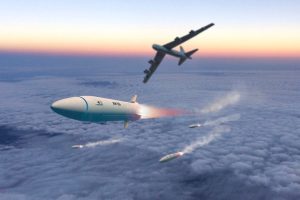 It’s finally here! Ever since the original release of v2.0, we have been putting together the next major update for Command PE, and the day has come: Command PE v2.1 is now available for download.
It’s finally here! Ever since the original release of v2.0, we have been putting together the next major update for Command PE, and the day has come: Command PE v2.1 is now available for download.
Phil Gatcomb has made a new series of tutorial videos detailing the most important new features, watch them HERE.
True to the spirit of every Command release, v2.1 is jam-packed with new features and enhancements straight from user feedback and requests. The full release notes are available HERE.
Some of the hottest new features include:
- New feature: Lua Event-hooks. It is now possible to extend and even override built-in simulation events by using Lua scripts and hooking them up to these events. This brand-new feature was showcased at our most recent user conference and easily turned heads, with good reason: It makes implementing mechanics overrides easier than ever, and with absolutely no involvement needed by the CPE development team (particularly useful for sensitive or proprietary models/data).
- New “Interactive Analysis Settings” window. Interactive analysis settings can now be configured on-the-fly, without having to restart the application for the changes to take effect. Big boon for analysts!
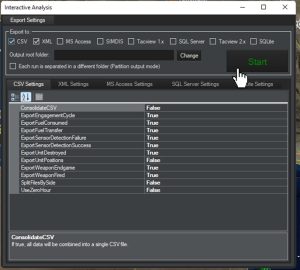
- New simulation feature: Radar resolution cell. (See this page for background). If multiple units are located within the resolution cell, the radar will detect only one of them. This feature confers an extra advantage to higher-frequency radar systems, as they are better able to distinguish between closely-clustered targets.
- New simulation feature: Radar vertical scan angle limits. Radars can only look up/down to a maximum of 30 degrees. This restriction severely curtails their ability to search for targets high above or well under them, and has indeed been used and exploited historically (example). There is an exception, however: Phased-array radars can scan upwards close to the vertical limit.
- New simulation feature: Phased array off-boresight gain reduction. Phased-array radars (PESA/AESA) suffer from gain degradation (hence effective range reduction) when attempting to detect targets far off the antenna boresight, both on the horizontal and vertical plane. This schematic shows the coverage difference between a mechanical-scan set (APG-68(V)9) and two AESA radar options for the F-16:

Note the severe drop on high off-boresight detection range on the two AESAs because of the gain reduction.This severe reduction in effective detection range can cause problems when cranking during BVR engagements, as the target is placed at the problematic “edge of scan envelope” area. To compensate for this, phased array-fitted aircraft now crank much more conservatively (less divergent from true bearing to target), in order to keep tracking the target. - New simulation feature: Daisy-chain weapon datalinks. Weapons can now directly connect to each other instead of always connecting to a firing/guiding platform. This behavior can be used by weapons to model comms extension, contact sharing etc.
- New simulation feature: Loitering weapons. Two types of loitering weapons are modelled; aerodynamic and parachute. Loitering weapons can be fired either directly against a target (as standard non-loitering weapons) or BOL-fired (Ctrl+F1) into a set of coordinates and then hunt for a target either autonomously or under direct control, depending on their communication status.
- Significant changes to sonar model. We have previously described these changes as part of the CMO v1.03 update, and they have now been absorbed into CPE as well.
- Wholly-reworked ballistic missile trajectory model. The BM model now uses true Keplerian equations resulting in highly-accurate trajectory profiles for each range segment (minimum-energy trajectory is assumed). This is particularly visible in intermediate- and long-range ballistic shots.
- New facility type: Surface (flat) & underground. This type represents facilities that reside primarily underground while still being partially surface-accessible (and thus attackable). Such facilities include ballistic missile silos (and old Nike-Hercules!), command / LCC bunkers and retractable forts & coastal defences (e.g. ERSTA). This type of facility can be damaged/destroyed in two ways: Direct hit on above-ground surface, or transmitted shock from underground detonation (e.g. MOP, B61-11, BLU-109/113 near-miss) or a VERY powerful surface burst (e.g. B53 laydown).
- Ground units now have fuel records and can refuel & replenish. If they run out of fuel, they are immobilized until they can refuel. They can also request replenishment, for both fuel and ammo/stores from suitable providers (e.g. fuel-bowser trucks or ammo carriers). If they can move to the UNREP vehicles on their own they will do so; otherwise the UNREP vehicles will rendezvous with them.
- Revised Mission Editor layout. The Mission Editor window layout has been revised, with the unassigned and per-mission assigned units windows now stacked vertically (on top of each other) instead of horizontally side-by-side. This makes it easier to read the full unit names (which may differ only towards their ends) as well as supplementary per-unit information (loadout, status etc.). In addition, the panels now include per-category filter buttons that allow displaying only the selected types of platforms:
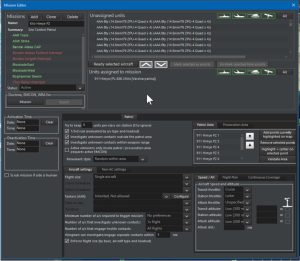
- Redesigned Message Log window. The Message Log window has been redesigned to be easier to interpret. Instead of grouping the displayed messages by type, messages to be displayed can now be filtered in/out by individual type, by toggling the buttons labelled with their respective type. In the example below, all message-type buttons are green, which means that all types are enabled for display:
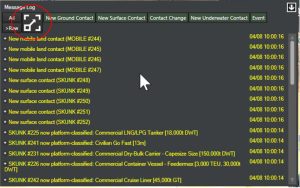
- New UI feature: Quick manual weapon allocation. While having an own-unit selected, shift + right-click on contact, and select “Engage with:”. This will present a submenu with all suitable weapons to engage with:
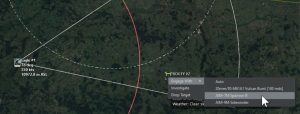
The right-click menu has also been enriched with additional options, such as:- Drop Target
- Investigate (ie. manouver to intercept & identify but do not engage)
- Refuel To Tanker
- Join Group As Escort (for aircraft only)
- RTB
- Assign New Home Base
- In WEGO-MP mode, clients are automatically able to use custom databases regardless of their license tier. Furthermore, if the server uses a custom database, this is automatically distributed to new MP clients as they connect to the running session. This greatly simplifies the setup for starting up new MP sessions.
- Load/save Doctrine & ROE templates. You can now load/save doctrine/ROE templates in XML format through the GUI (“Doctrine/ROE” window, “General” tab):

- You can now change the side of any existing unit. This is supported both by the GUI and also through scripting.
- Updated database releases (v492), with hundreds of additions and changes.
- Dozens of other tweaks & additions big and small, based on the feedback that the development team receives from the professional user community on a daily basis.
With v2.1 out in the wild, the dev team is now free to merge several currently-in-development major new features into the main development branch, so you can update even more on the next update release. Stay tuned!





